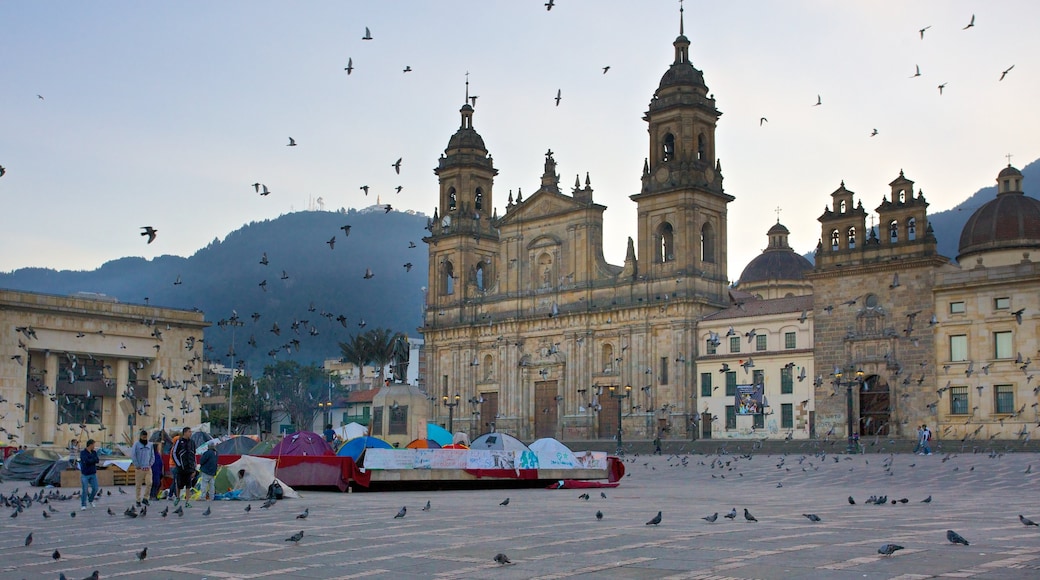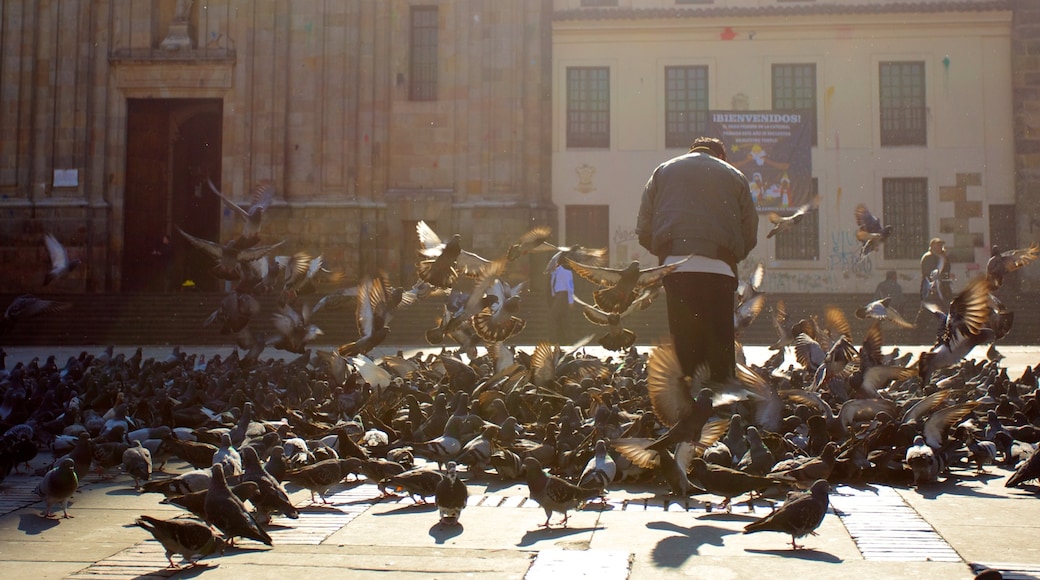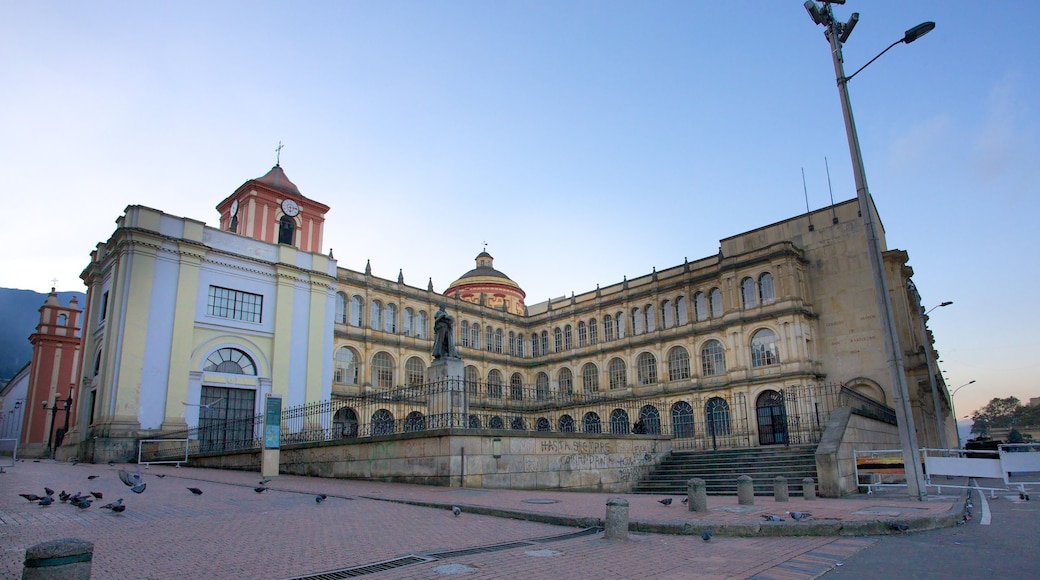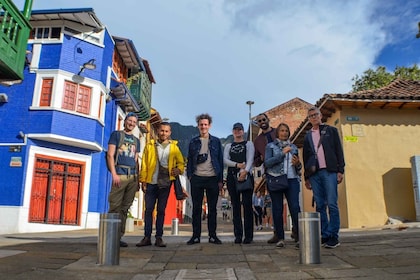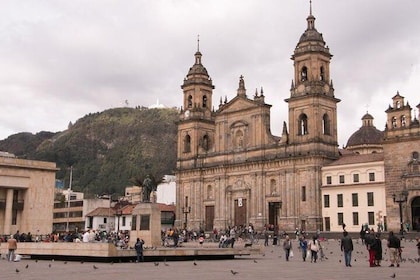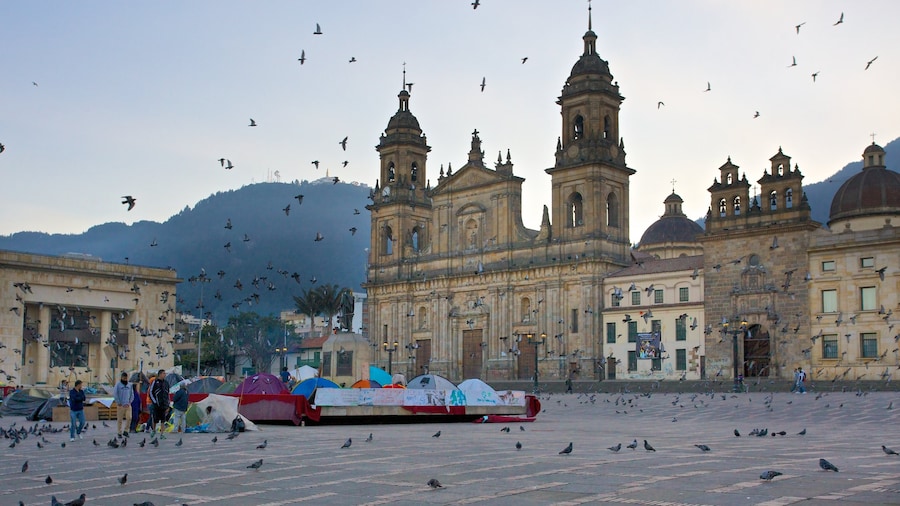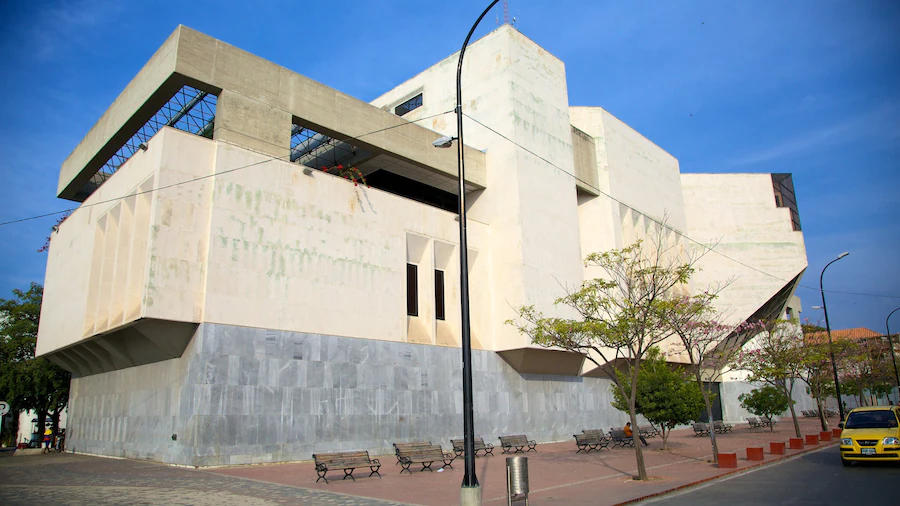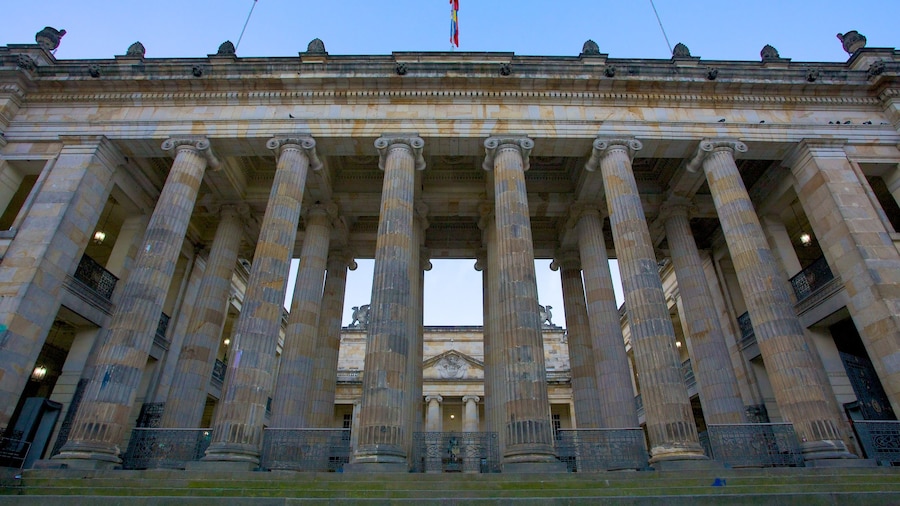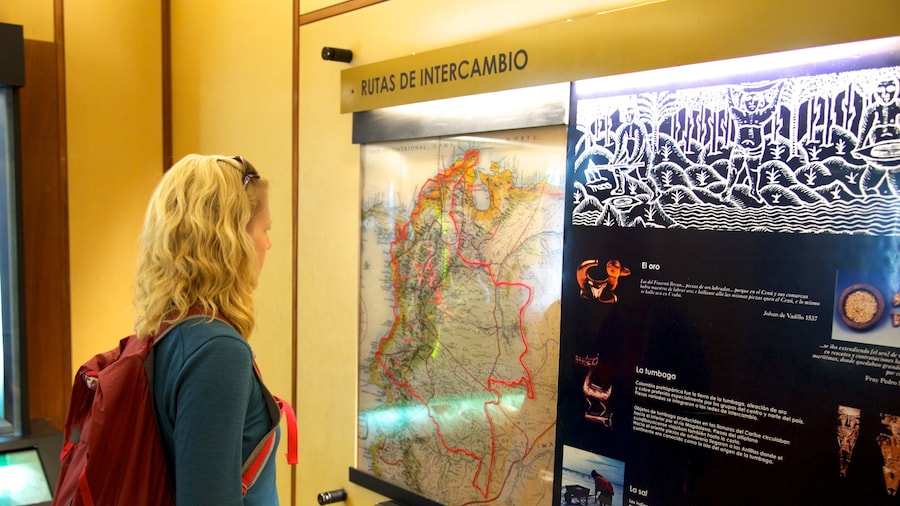Walk the main hall of this elegant cathedral and find a collection of charming ancient artworks alongside the crypts of some of the city's major historic figures.
Enter the Catedral Primada de Colombia (Primary Cathedral of Colombia) and admire the intricate architecture of its main chamber. The crypts here house the bodies of some of Columbia's most famous characters. This cathedral is the largest of its kind in the country.
The Cathedral of Columbia site has seen many constructions and reconstructions of city churches. Notice its 19th century architecture, which replaced former structures that were damaged by earthquakes or simple weathering. This site has been occupied by churches since 1538, when Spanish conquistadors founded a thatch roofed chapel that began the city's religious legacy.
From the Plaza de Bolívar, get a spectacular photo of the church facade with Monserrate mountain behind. Approach its grand entrance and note the church's right-angled floor plan, complimented by Egyptian columns and contrasted with a domed ceiling. Despite the tendency of Bogota's churches to be ornate and decorative, this interior is quite simple. Spot paintings on the wall that date back to the 17th century.
Nearby, the cathedral chapels are well worth a visit. A chapel dedicated to Saint Elizabeth of Hungary is one of the most prominent. This is the final resting place of Bogotá founder Gonzalo Jiménez de Quesada. Also in this crypt are the tombs of military leader Antonio Nariño and renowned painter Gregorio Vásquez de Arce y Ceballos.
Find the Catedral Primada de Colombia on the northeastern side of Plaza de Bolívar. Walk there from one of many attractions around La Candelaria neighbourhood, Bogotá’s historic centre. Such landmarks include the Botero Museum and Casa de la Moneda. Alternatively, catch a public bus to a nearby stop or use the metered parking found at the Luis Angel Arango Library.
The cathedral is open every day except Monday and is free to enter. Visitors are asked to explore quietly and dress respectfully as the cathedral is still in use. As you exit, pick up a spiritual book or a trinket at the cathedral store.
